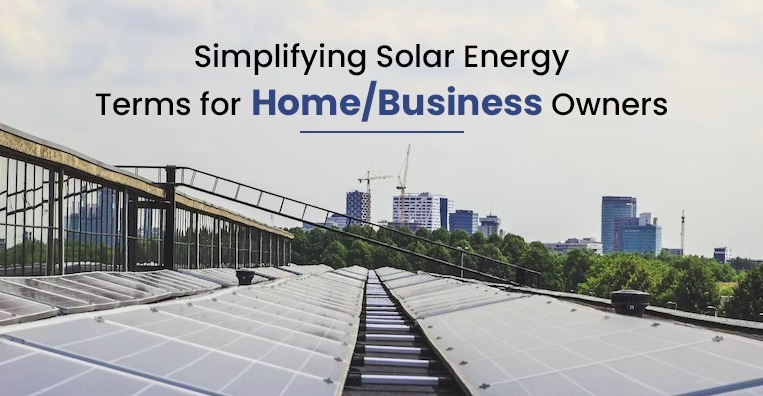Embarking on the journey of installing residential solar panels may appear daunting, given the plethora of new terms and concepts to grasp. To assist homeowners in navigating this exciting transition to renewable energy, Solar Insure has compiled a comprehensive glossary of common terms related to residential solar installation. This invaluable resource aims to clarify important solar terms, offering clear and concise definitions to make the realm of solar energy more accessible and transparent.
Whether you’re just beginning to explore solar power or ready to embrace solar ownership, this glossary serves as a convenient reference point to help you comprehend the intricacies of your solar investment.
Balance of System (BoS): All components of a solar photovoltaic (PV) system, excluding solar panels. This encompasses items like mounting structures, wiring, inverters, and monitoring systems.
Battery Storage: An optional component of a solar panel system that enables homeowners to store excess solar energy for use during periods of low sunlight or power outages.
Energy Audit: An assessment of a home’s energy use to identify opportunities for improved energy efficiency.
Feed-in Tariff (FiT): A government program providing financial incentives for homeowners to generate solar electricity and sell it back to the grid.
Grid Connection: The process of connecting a solar PV system to the electrical grid, allowing homeowners to draw electricity when needed.
Ground-Mounted Solar: A solar system installed on the ground rather than a rooftop.
Inverter: A device converting direct current (DC) electricity from solar panels into alternating current (AC) electricity suitable for home use.
Interconnection Agreement: An agreement between a solar system owner and the utility company, outlining terms for connecting the system to the grid.
Installer: A contractor or company responsible for solar system installation.
Kilowatt (kW): A unit of power representing the rate at which electricity is generated or consumed.
Kilowatt-hour (kWh): A unit of energy representing the total amount of electricity produced or consumed over time.
Microinverter: A small inverter installed on each solar panel, allowing independent conversion of sunlight into AC electricity.
Module-Level Power Electronics (MLPE): Devices like microinverters or power optimizers installed at the individual solar panel level to optimize performance and monitor output.
Monitoring System: A system enabling homeowners to track and monitor solar PV system performance, including energy production and consumption.
Net Metering: A billing arrangement allowing homeowners to receive credits for excess electricity generated by their solar panels and fed back into the grid.
Off-Grid System: A standalone solar PV system not connected to the electrical grid, often used in remote areas.
O&M (Operation and Maintenance): Ongoing tasks to keep a solar system functioning optimally, including cleaning, inspections, and repairs.
Performance-Based Incentive (PBI): Financial incentives based on solar system performance over time.
Performance Ratio (PR): A measure of actual solar system output compared to its potential output under ideal conditions.
Photovoltaic (PV) System: A system converting sunlight into electricity using solar panels.
Photovoltaic Cell (PV Cell): The basic unit of a solar panel, converting sunlight into electricity.
Power Optimizer: A device installed on each solar panel to maximize power generation by adjusting output to current light conditions.
Power Purchase Agreement (PPA): An agreement where a solar company owns and maintains solar panels on a homeowner’s roof, selling the electricity to the homeowner.
Racking System: The structure used to mount solar panels to a roof or the ground.
Roof Orientation: The direction a roof faces, affecting the amount of sunlight received by solar panels.
Single-Line Diagram (SLD): A simplified diagram of an electrical system, including solar panels, inverters, and grid connection.
Site Assessment: An evaluation by solar professionals to determine the suitability of a location for solar panel installation.
Soiling: Dust, dirt, or substances accumulating on solar panels, reducing their efficiency.
Solar Array: A group of solar panels wired together to create a unified system generating electricity from sunlight.
Solar Canopy: A structure providing shade while housing solar panels.
Solar Efficiency: The percentage of sunlight converted into electricity by solar panels.
Solar Incentives: Financial incentives, like tax credits or rebates, provided by governments or utility companies to encourage solar energy adoption.
Solar Insolation: The amount of solar radiation received per unit area over a specific time period.
Solar Shading: Obstacles like trees or buildings that block sunlight, reducing solar panel efficiency.
String Inverter: An inverter converting DC electricity from a string of solar panels into AC electricity.
Tilt Angle: The angle at which solar panels are installed on the roof, optimized for capturing maximum sunlight.
Warranty: A guarantee from the manufacturer or installer covering defects, performance, and durability of solar panels and related components.
Solar Insure’s Glossary of Terms:
30-Year Monitoring and Warranty: A Solar Insure product offering monitoring and warranty coverage for solar products and installation.
20-Year Battery Monitoring and Warranty: A Solar Insure product offering monitoring and warranty for battery coverage, including replacement if capacity drops below 30% between years 11-20.
Certificate to Product Warranty Registration Form: A document received 2 to 4 weeks after system installation, marking the beginning of Solar Insure monitoring and warranty.
Contractor’s Liability Insurance: Insurance covering potential damages to the home during solar installation.
Understanding these terms will help empower homeowners to make informed decisions about going solar. From the search and design process to installation, monitoring, and warranty, each phase involves specific terminology that helps to illuminate the process. With this glossary as your guide, navigating the world of solar energy can become a more manageable and rewarding journey.







Leave a Reply